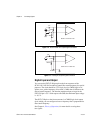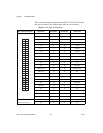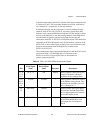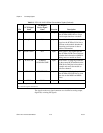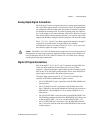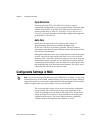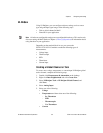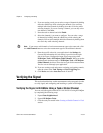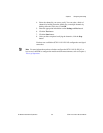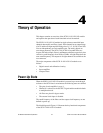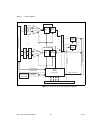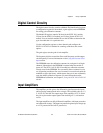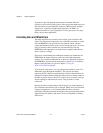
Chapter 3 Configuring and Testing
SCXI-1141/1142/1143 User Manual 3-2 ni.com
Input Selection
The front end of the SCXI-1141/1142/1143 includes a software
configurable switch that allows you to programmatically connect the input
channels of the SCXI-1141/1142/1143 to either the front connector or
internal ground. Refer to Table 5-1, NI-DAQmx Voltage Measurement
Properties, for details about the available input coupling modes supported
by the SCXI-1141/1142/1143.
Auto-Zero
Setting the Auto-zero mode to Once improves the accuracy of
the measurement. With auto-zero enabled, the inputs of the
SCXI-1141/1142/1143 are internally grounded. The driver makes a
measurement when the task begins and then subtracts the measured offset
from all future measurements.
Although the DAQ driver does wait a certain amount of time for the signal
to settle, it may not be long enough if the filter is set to very low cutoff
frequency. This is especially true if the voltage ever goes out of range and
the amplifier becomes saturated. You can manually zero out the offset by
comparing the ground coupled value of a channel to its DC coupled value,
then subtracting that offset from future measurements. This allows you to
control the time allowed for the signals to settle.
Configurable Settings in MAX
Note If you are not using an NI ADE, using an NI ADE prior to version 8.3, or are using
an unlicensed copy of an NI ADE, additional dialog boxes from the NI License Manager
appear allowing you to create a task or global channel in unlicensed mode. These messages
continue to appear until you install version 8.3 or later of an NI ADE.
This section describes where you can access each software-configurable
setting in MAX. The location of the settings varies depending on the
version of NI-DAQmx you use. Refer to the DAQ Getting Started Guide
and the SCXI Quick Start Guide for more information on installing and
configuring the hardware. You can use DAQ Assistant to graphically
configure common measurement tasks, channels, or scales.



